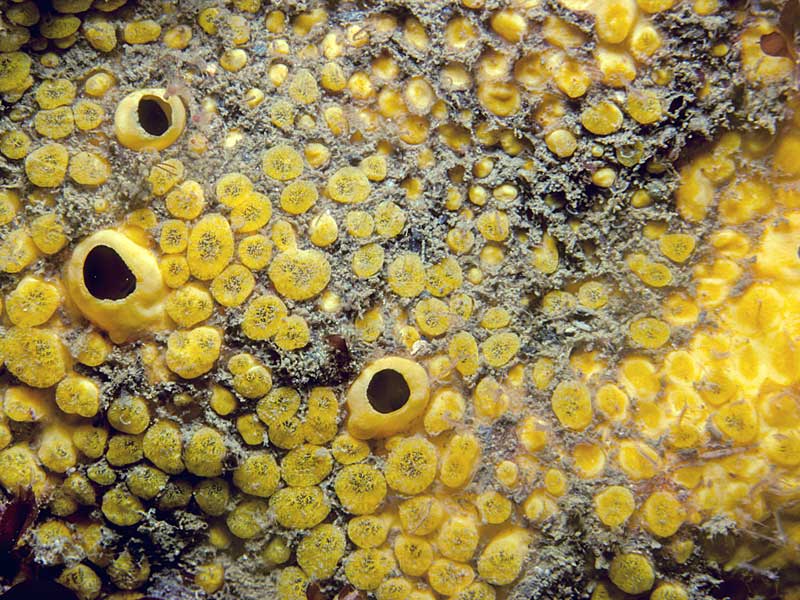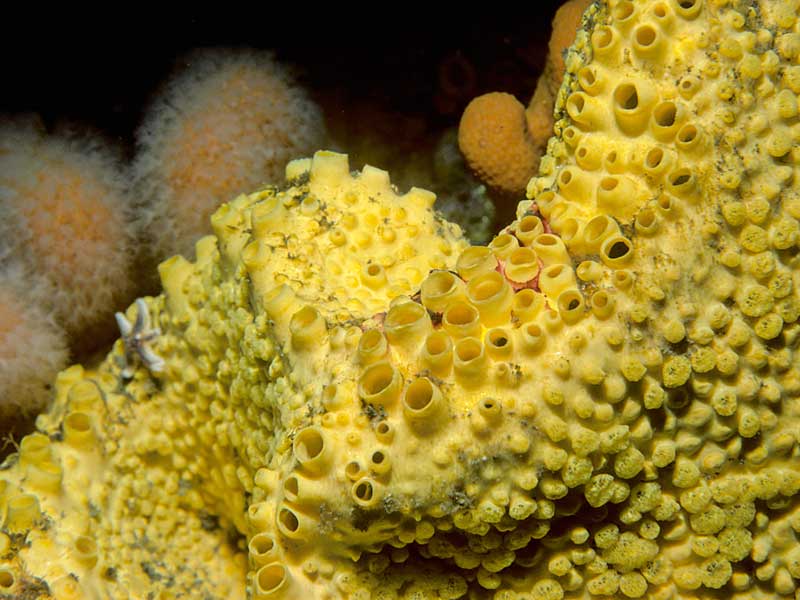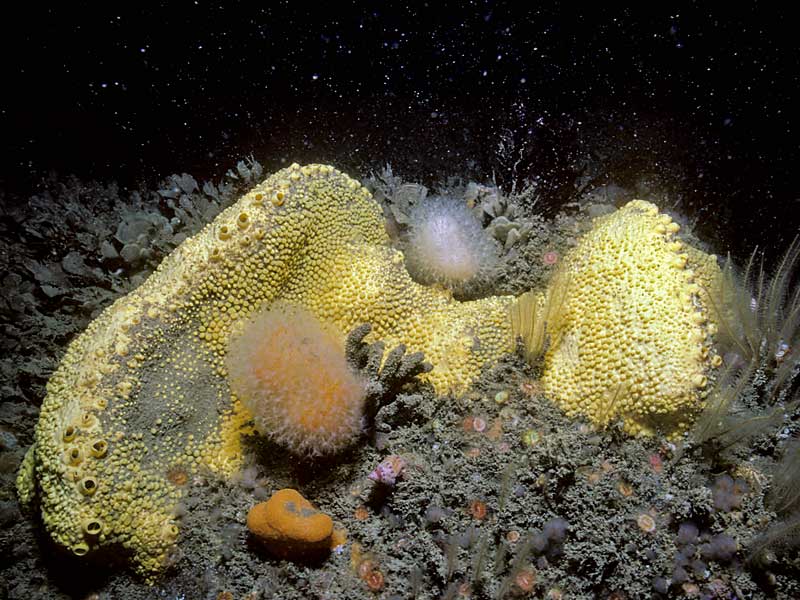| PORIFERA : Clionaida : Clionaidae | SPONGES |
Cliona celata Grant, 1826
 |
| Cliona celata |
Description: This is the largest and most conspicuous sponge that occurs in the British Isles. It has the habit of boring into limestone and other calcareous substrata e.g. shells. The boring stage is seen as clear sulphur lemon lobes, which are the rounded tips of papillae in the rock. The raphyrus stage becomes massive lobose with raised, rounded ridges. Large specimens may be up to 100 cm across and 50 cm high. The colour is bright yellow in life. The surface of this form is evenly covered by tuberculate inhalant papillae. Large oscules with raised rims are found along the tops of the ridges.
Habitat: This species is found under a wide variety of physical conditions but is most abundant on exposed lower circalittoral bedrock.
Distribution: A common species on most coasts of the British Isles but apparently absent from the North Sea.
Similar Species: The colour and form of this sponge make it unlikely to be confused with any other.
Key Identification Features:
- Bright yellow coloration.
- Form; boring/massive.
- Evenly distributed, inhalant sieve-like openings.
Distribution Map from NBN: Cliona celata at National Biodiversity Network mapping facility, data for UK.
iNaturalist: Cliona celata at iNaturalist World Species Observations database.
GBIF data for Cliona celata
WoRMS: Cliona celata at World Register of Marine Species. Accepted name: Cliona celata Grant, 1826. AphiaID: 134121.
Classification: Biota; Animalia; Porifera; Demospongiae; Heteroscleromorpha; Clionaida; Clionaidae; Cliona
| Previous species | Next species |
| Picton, B.E. & Morrow, C.C. (2024). Cliona celata. Grant, 1826. [In] Encyclopedia of Marine Life of Britain and Ireland. https://www2.habitas.org.uk/marbiop-ni/speciesaccounts.php?item=C3020. Accessed on 2025-04-04 |

